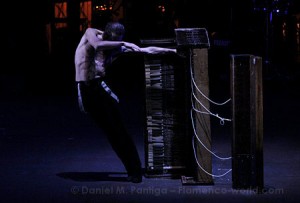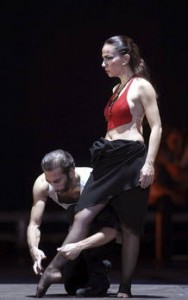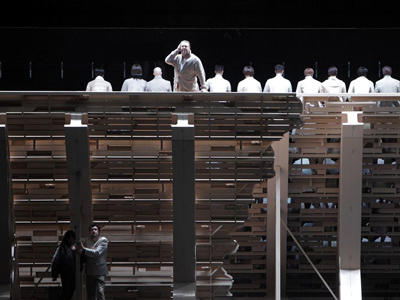by Sedgwick Clark
My favorite solo piano music is Debussy’s – iridescent, sensual, and, after all these years, mysterious. My first recording of his music was by Charles Rosen performing Images, Books I and II, Estampes, L’Isle joyeuse, and other short pieces on an Epic LP. It had been praised by David Hamilton as “indispensable” and “revelatory” in High Fidelity magazine. “[There] is an extraordinary musical intelligence at work in these performances, as well as an impeccable technique; other recordings are simply not in the running,” he concluded.
Rosen died on December 9 at age 85. Soon after, I listened to that worn LP and to his earlier recording of the composer’s Etudes. I had not played either of them for at least three decades, and the pianist’s mastery remained undiminished by time and by my subsequent acquaintance with Walter Gieseking’s classic, more “impressionistic” interpretations. It’s unfortunate that so few of Rosen’s Epic and Columbia recordings were transferred to CD. Sony did release his acclaimed Bach and Beethoven recordings on its Essential Classics line, but his equally praised 20th-century repertoire remains in limbo. Five years ago I compiled three CDs worth of his recordings of music by Bartók, Liszt, Schoenberg, Stravinsky, Ravel, and Debussy, and approached Arkiv to release them, to no avail.
I first heard Rosen in concert at Hunter College on March 7, 1969, playing Pierre Boulez’s Piano Sonata No. 3. Boulez was conducting a chamber group and accompanying soprano Bethany Beardslee – each of whom I was also hearing for the first time – in works by Schoenberg and Debussy. Although I’m writing now about Rosen, I can’t resist adding that the Pierrot Lunaire after intermission was the goose-pimpliest performance of the piece I’ve ever heard. It was around this time that I first saw Rosen at a Hitchcock double bill at St. Mark’s Place movie theater in Manhattan’s East Village.
Over the years, I had worked up the nerve to say hello to him at concerts, and I approached his publicist to ask him to write an article for WNCN’s music magazine, Keynote, which I edited. It would coincide with a pair of Carnegie Hall concerts devoted to Beethoven and Schumann in January 1982. In the piece, entitled “The Original Schumann,” he maintained that the composer’s first editions were superior to the revised editions, which “clouded our understanding of Schumann’s originality.” He observed that “[t]empo marks like ‘impertinently’ were changed to ‘with humor,’ making Schumann’s intention far less clear to the pianist.” We had talked about humor in Beethoven’s Diabelli Variations and Schumann’s Carnaval, in particular, and I remember laughing out loud at moments in his performances. It wasn’t that he was hamming up the music, but that the recordings I had by Serkin and Arrau were so serious! Look for his recordings, made at the same time, to see what I mean.
Part of the enjoyment of his recordings was his witty, insightful liner notes; he also contributed regularly to the New York Review of Books. His first book was the National Book Award-winning The Classical Style (Viking, 1971), earning reviews as a landmark in the study of Haydn, Mozart, and Beethoven. The unfortunate result was that his writing began to overshadow his performing in the eyes of the critics, and his New York appearances became fewer. In one of his last New York recitals, at the 92nd Street Y in 2006, he played the last three Beethoven sonatas masterfully, which Steve Smith of the Times enthusiastically noted.
Charles was Musical America’s Instrumentalist of the Year in 2007. Two days after his death, his publicist, Connie Shuman, called to tell me that a friend of Charles’s was on the phone with him when he learned of the award and that he was “ecstatic” at being honored as a pianist rather than an author.
I last saw him on December 6, 2010, at Columbia University’s Miller Theater. The occasion was an all-Boulez program honoring the French composer/conductor at age 85. Among the adoring crowd were two other titans of contemporary music, Carter and Rosen.
Rosen’s passing, of prostate cancer, came a month after the death of Elliott Carter (see my blog, December 21), whose music he had championed with such distinction. It happened during one unsettling week in which the Times’s obit pages seemed to crescendo with the loss of favorite artists:
Dave Brubeck (Dec. 6, 1920- Dec. 5, 2012)
Charles Rosen (May 5, 1927-Dec. 9, 2012)
Galina Vishnevskaya (Oct. 25, 1926-Dec. 10, 2012)
Lisa Della Casa (Feb. 2, 1919-Dec. 10, 2012)
Ravi Shankar (April 7, 1920-Dec. 11, 2012)
Looking Forward
My week’s scheduled concerts (8:00 p.m. unless otherwise noted):
1/8 Metropolitan Opera at 7:30. Donizetti: Maria Stuarda. Maurizio Benini (cond.). Joyce DiDonato (Mary Stuart); Elza van den Heever (Queen Elizabeth I); Matthew Polenzani (Roberto); Matthew Rose (George Talbot).




